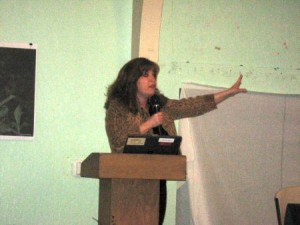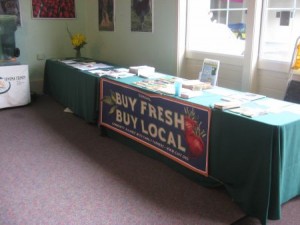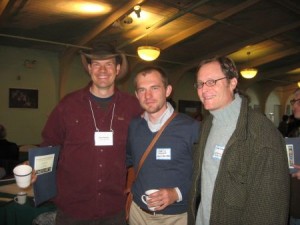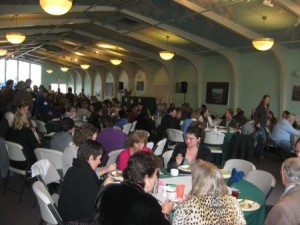Last week in my home county, people got together to address food, not as a luxury item or a culinary exercise, but as a nexus of economics, ecological improvements and public health.
It’s surprising that only in the past few years have policy makers and “regular” people made a connection between poor diet and poor health outcomes; an epidemic of childhood obesity, sharp increases in heart disease, diabetes and strokes, all of which can be affected by diet. At the same time, locally, it is starting to dawn on our politicians that “agriculture,” in Sonoma County, may encompass more than wine grapes, and that supporting a diverse agriculture is better economics and better stewardship of our land and water.
300 people attended the county’s first Food Forum. They included farmers. It was a good thing the weather was bad, because it would have been hard to get farmers there if they had thought they could get in a good day of work in the fields. Other groups who were represented; retailers and specialty food producers such as wine and cheese makers; educators, local government officials and at least one federal official from the USDA. Members of the Farm Bureau attended; local community based organizations were there; grassroots agricultural groups were represented. Flaming tree-hugging liberals sat next to Farm Bureau Republicans. Politicians shared tables with Small Government fans. As Heather Irwin, a blogger for the local daily paper, said, flannels and work-boots, suits and ties.
A Bridge from the Field to the Table
What are the issues? Sonoma County is famous for its agriculture. At the same time the county has demonstrable “food deserts,” areas where for every 1 grocery store there are 7 fast food places, areas where people cannot easily get food that isn’t heavily processed. We are famous for our agriculture but cannot generate enough to meet the demand, while at the same time many specialty food producers sell internationally, or nationally to places like New York and New Orleans. Most farmers cannot and do not make a living farming; there is at least one other income, often a full-time job, in the household.
It costs more to produce some foods in Sonoma County than it does in the Central Valley or other states (or South America). This costs gets passed on to the consumer, so a single working mom with two children, for example, is making a choice based on economic necessity, not ignorance, when she buys a bag of carrots from Chile at WalMart rather than local carrots fresh out of the ground.
Land use, water use and tax policies play big roles in any discussion about food production.
The event lasted all day and was jam-packed with content. It won’t all fit on one posting, so I plan to do several. Later, you’ll meet the Producers, The Eaters, and the Solutions, but for right now, enjoy some pictures and some quotes.
“Food is more than fuel. It is love, it is life, it is how we connect with one another.” County Supervisor Shirlee Zane.
“As far as making changes in your food system, you are over the first big hurdle; you have the support of your Board of Supervisors.” Richard Rominger, Former Secretary of Agriculture and Head of the California Department of Food And Agriculture.
*
“Rest it on your lower lip, just like an ice cream cone.” A voice from the crowd, instructing Richard Rominger on how to use the wireless microphone.
“How do we define ‘local?’ And how do we define ‘access?’ And what do we mean when we say ‘food?’” Stephanie Larson, UC Davis Coooperative Extension.
“We have a niche market. I guess what I’m looking for now is the uber-niche,” Keith Abeles, Quetzal Farms. (Unfortunately, Keith is not one of the three farmers pictured above.)
*
“If you’re a farmer or a specialty food producer, you’re certainly not in it for the high margin of profitism.” Sheana Davis, cheese maker.
“That’s it. I need cookies.” Someone seated near me, after hearing Dr. Mary Maddux’s presentation on the link between processed foods and diabetes and heart disease.






